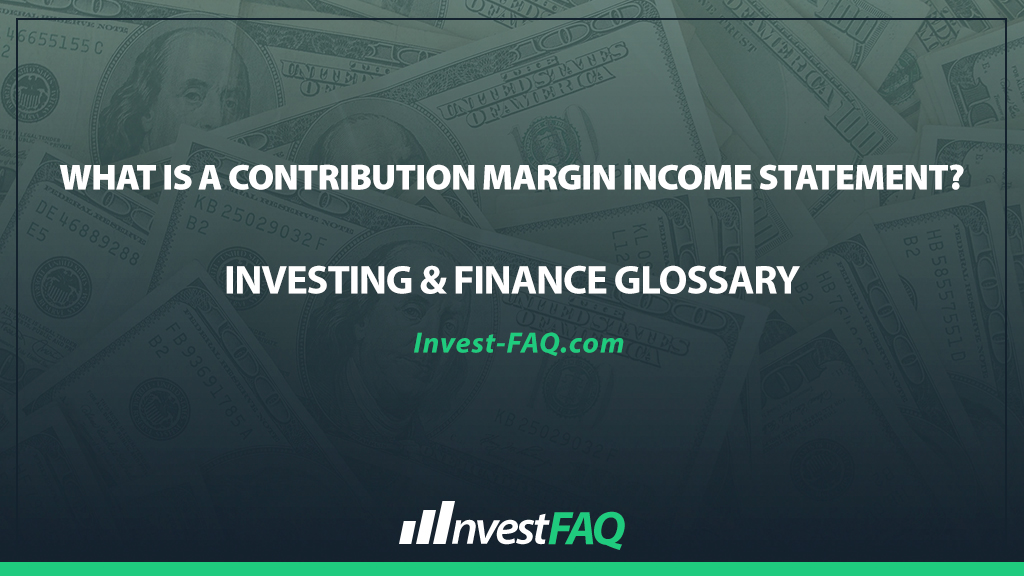
Contribution Margin Income Statement
Contents
A contribution margin income statement is a financial report that focuses on the variable costs associated with producing goods, separating them from fixed costs to highlight the contribution margin. This margin represents the portion of sales revenue that is not consumed by variable costs and is available to cover fixed costs and contribute to profit.
Businesses utilize the contribution margin income statement to make crucial decisions regarding pricing, cost control, and production levels.
By distinguishing between variable and fixed costs, companies can better understand the profitability of individual products or services. This insight aids in identifying which items contribute most to covering fixed costs and generating profit, enabling targeted strategies for improving overall financial performance.
Additionally, it supports decision-making related to product discontinuation, introduction, or pricing adjustments based on the contribution margin.
Example of a Contribution Margin Income Statement
Imagine a company, Delicious Bakery, which sells cakes. For simplicity, let’s say it sells each cake for $20. The variable costs (ingredients and packaging) per cake amount to $10. Last month, Delicious Bakery sold 1,000 cakes, incurred $5,000 in fixed costs (rent, utilities), and $10,000 in variable costs.
From the sales of 1,000 cakes, Delicious Bakery generated $20,000 in revenue. Subtracting the total variable costs of $10,000 gives a contribution margin of $10,000.
This amount is then used to cover the fixed costs of $5,000, leaving a net profit of $5,000 for the month. The contribution margin ratio, which is the contribution margin divided by sales revenue ($10,000 / $20,000), is 50%. This means for every dollar of sales, $0.50 contributes to covering fixed costs and profit.
Types in Business Scenarios
Product-based businesses: Use it to determine the profitability of each product line.
Service-oriented enterprises: Analyze service offerings to optimize pricing and resource allocation.
Manufacturing sector: Apply it to assess production efficiency and cost management.
Retailers: Evaluate product assortments to maximize profitability through optimal product mix and inventory management.
Significance for Investing & Finance
The contribution margin income statement is significant in accounting for its strategic focus on variable costs and their impact on operational efficiency and profitability.
It provides a clear view of how sales revenue translates into profit after variable and fixed costs are accounted for, which is crucial for break-even analysis, budgeting, and financial planning. This approach enables businesses to make informed decisions that enhance profitability and operational performance.
Understanding and managing the contribution margin is essential for sustaining and growing a business in competitive markets.
Summary
The contribution margin income statement is a valuable tool in managerial accounting, offering detailed insights into the cost structure and profitability of a business.
By focusing on the contribution margin, businesses can identify the most and least profitable aspects of their operations, enabling strategic decisions that drive financial success. Its utility across various business scenarios underscores its importance in effective financial management and strategic planning.
FAQ
What distinguishes a contribution margin income statement from a traditional income statement?
A contribution margin income statement separates variable costs from fixed costs to calculate the contribution margin, unlike a traditional income statement that combines all costs to determine net income, providing clearer insight into profitability and cost behavior.
How can a contribution margin income statement aid in pricing decisions?
By highlighting the contribution margin, this income statement format helps businesses understand how much revenue from each sale is available to cover fixed costs, guiding pricing strategies to ensure profitability.
Why is the contribution margin income statement important for break-even analysis?
The contribution margin income statement is crucial for break-even analysis as it shows the exact amount of sales revenue needed to cover both variable and fixed costs, pinpointing the sales volume at which the business neither makes a profit nor incurs a loss.
Can the contribution margin income statement be used in all types of businesses?
Yes, the contribution margin income statement can be applied across various business types, including service, manufacturing, and retail, as it universally provides valuable insights into cost management, pricing, and profitability.
